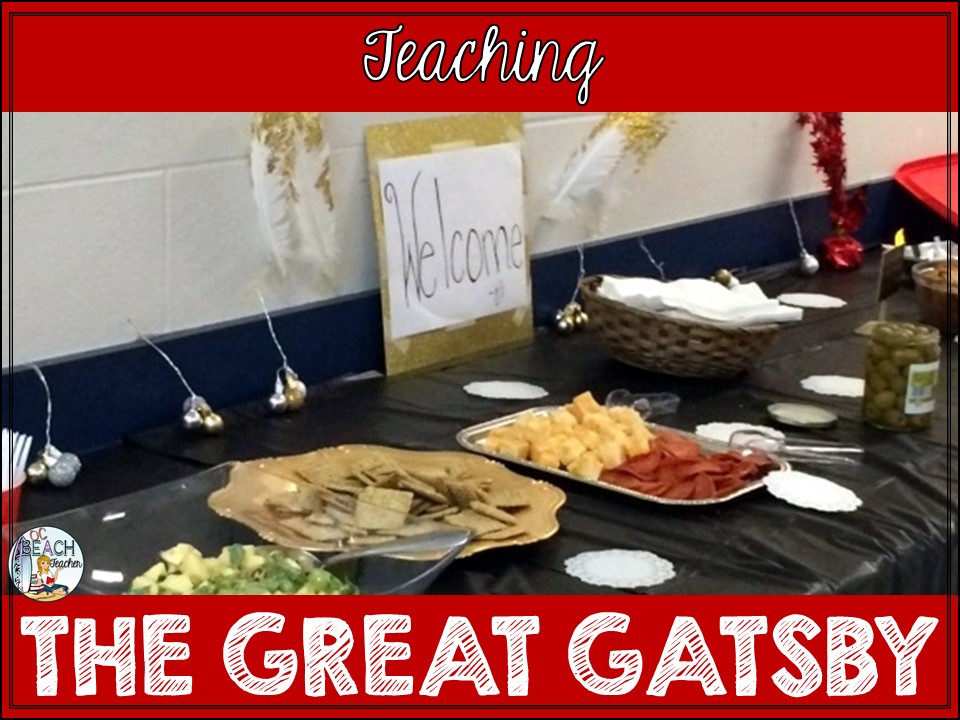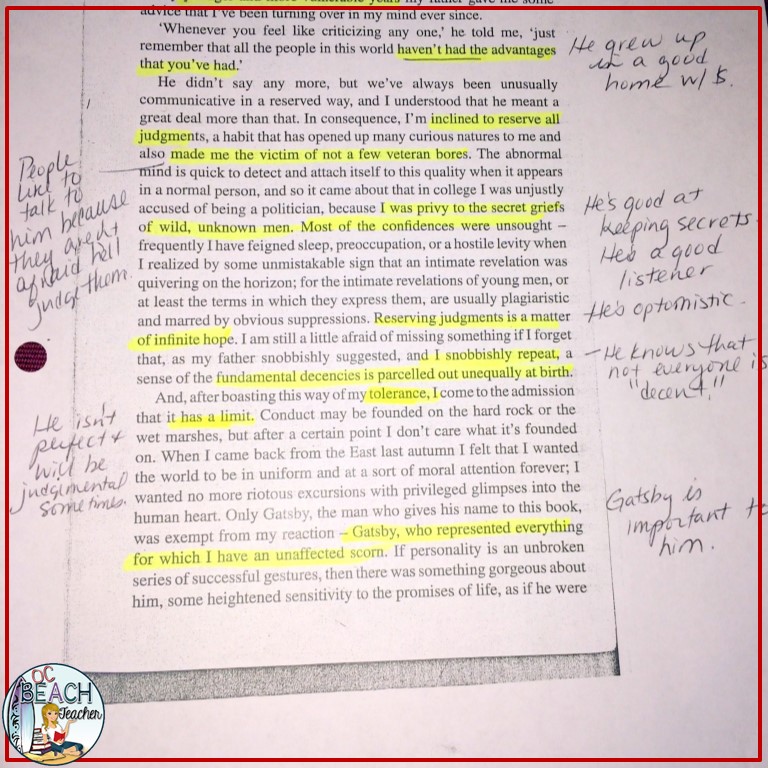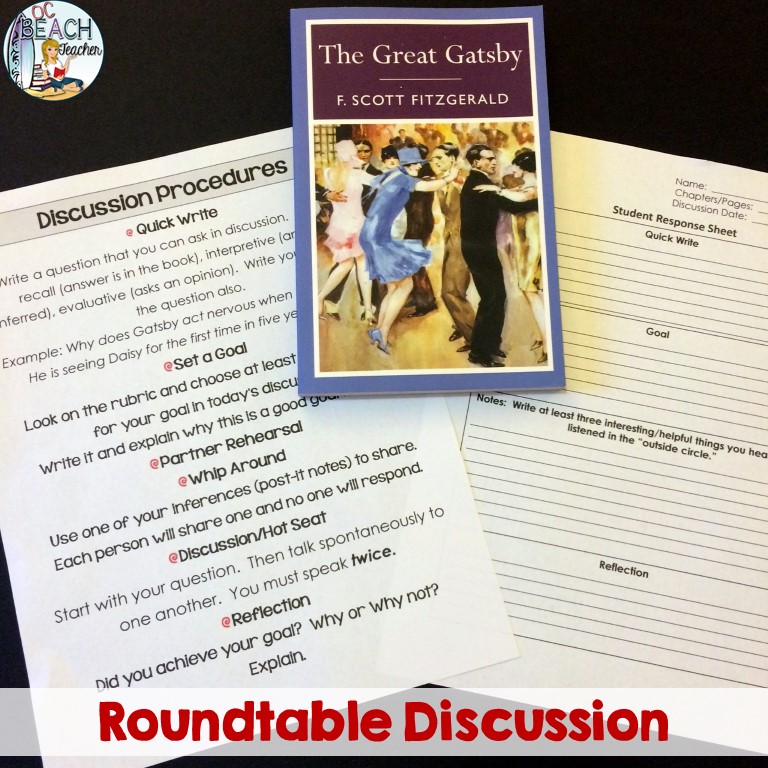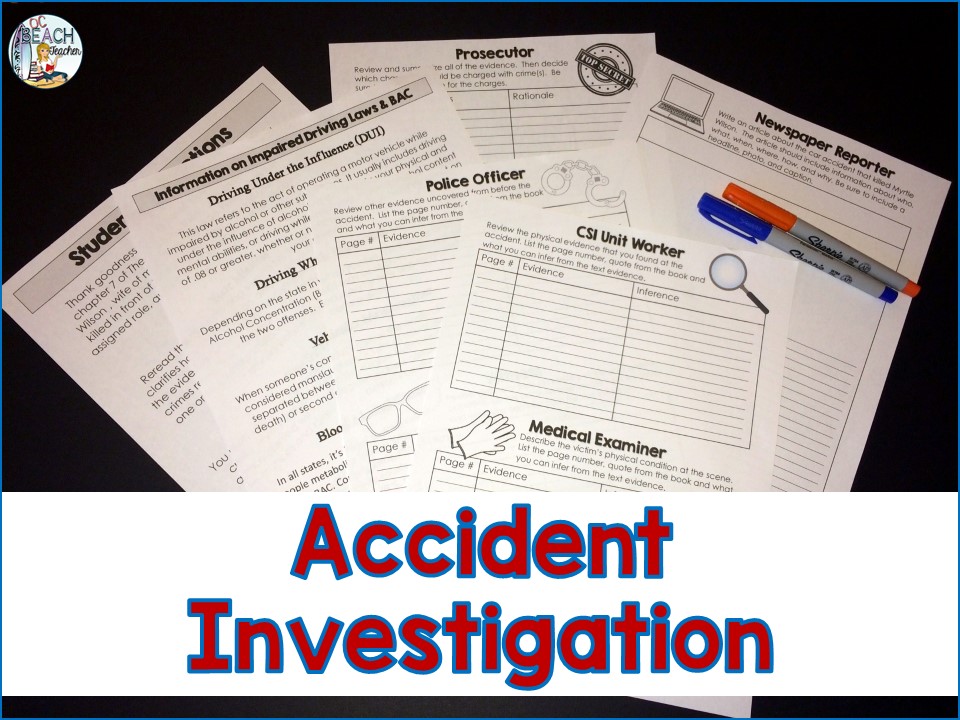Most English teachers would consider what I’m about to say sacrilegious: I didn’t like reading The Great Gatsby in high school, and for many years I didn’t enjoy teaching it. However, I have changed my mind. I’m getting a better appreciation for the novel as I try to make it more relevant and comprehensible for my high school juniors. Here are some of the things that I’ve done to make it a better experience for my students (and me):
Get Students Out of Their Seats
There aren’t too many opportunities for students to walk around in English classes so to get my students engaged and thinking about the book, I start with a text evidence anticipation activity. I’ve typed thirty sentences from the book, which I have cut and laminated. On the first day of the reading, I give at least one sentence to each student. Then I tell them they will become “detectives” and collect nine other sentences. They walk around the classroom and share their sentences with each other, writing them down on a handout. Afterwards, they return to their seats, review the “evidence” they’ve gathered, and make predictions for what the book may be about. We have whole-class discussion of their ideas.
Close Reading of the First Page
Because my students often struggle with the language and style of the text, I distribute a copy of the first page and ask them to read it closely. They are directed to look for clues about the narrator and then to make inferences about him in the margins. I model with a think aloud in the first line, noting that the narrator says “in my younger and more vulnerable years.” I explain to the students that this helps me know he is speaking from an older age and plans to share his wisdom.
Reading Checks
Obviously, students won’t understand The Great Gatsby, if they aren’t reading. For that reason, I use the free version of Socrative to give short reading quizzes at the beginning of class. I create three – five multiple choice or true/false question for basic recall of the reading, and students can respond on their phones or computers. I can easily download reports with student responses to help me know which students are doing their reading or struggling with their comprehension.
Numbered Heads
While students are still at the beginning of the novel, I often lead the discussion. Frequently, I use a group activity called “numbered heads.” I assign groups of four – five students and ask them to respond to the same questions from the assigned chapters. They work together to answer the questions but are required to respond individually through “numbered heads.”
As student confidence with their reading increases, I turn the the discussion over to them through my roundtable discussion. Recently I used this format to help students discuss chapters five and six. First, students completed a quick-write activity to warm them up for discussion. Then they reviewed a rubric and set goals for the discussion. Next, they met with partners to rehearse their ideas. During the rehearsal, they shared the work they did to prepare for discussion (a handout with notes, quotes, and vocabulary) and their quick writes. After sharing with partners, we moved the desks into “inside and outside” circles. The inside circle discussed the book first while the outside circle listened. While the outside circle listened, they took notes on what they heard. Finally, after both groups had been in the inside circle (I usually rotate after 10 – 15 minutes), they returned to their seats and wrote a reflection.
Accident Investigation After reading chapter 7, I will engage students in close reading of the car accident that killed Myrtle Wilson. In this activity, students assume roles (CSI Unit Worker, Medical Examiner, Police Officer, Witness, Prosecutor, and Newspaper Reporter) as they reread and review text evidence for the accident. After summarizing the accident evidence, students are also expected to read information about the laws for driving while impaired. They determine who should be charged with crimes and what charges should be filed, writing rationales for their decisions.
The Finale
Instead of a traditional test, I assign a hybrid essay that incorporates elements of narrative writing, expository writing, and literary analysis for their summative assessment.
Basically, each student selects a character and writes an essay in first person point of view; they have to support their inferences and comments with text evidence. To increase the rigor, I also ask students to include a paragraph explaining how their characters are connected to a theme.
For added fun, we celebrate with a Roaring 20’s party, where students role-play their characters and interview one another. Sometimes I also invite an administrator to stop by or students from other classes. It creates great memories.
What do you do to make teaching The Great Gatsby a success? Please share in the comments below.







